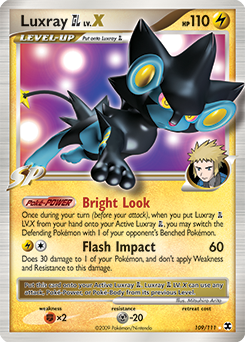Repeating History — Using Old Formats to Get Better at 2020 Pokemon
Hey guys! It’s Charlie and I’m super happy to be back with another article! Quarantine has been going pretty well, I just graduated from high school and am super looking forward to starting college in the fall (hopefully in person)! In the past couple weeks, I’ve taken a much-needed break from thinking about Pokemon and used my time to try some things I’ve wanted to do, like learning the piano and reading lots of books. One of those books spent a long time discussing the author’s chess career and how he was able to improve over the years and become a world-class player. A theme I saw constantly reinforced throughout the book was digging deep into history by studying incredible games between the best Grandmasters in the world. Games from the early 1900s were often dug up as reference material when making tough decisions between moves, allowing players with deep historical knowledge to better understand complex positions and quickly adapt when the momentum shifts.
While Pokemon is not as “deep” a game as chess (I define “deep” as the number of incredibly distinct situations with thousands of viable lines of play), it is much more diverse. The pieces (cards) are different in pretty much every game and you get to choose which 60 cards you want to bring to a tournament! Top player and two-time Worlds Finalist Ross Cawthon said in an interview with Pokemon, “The pieces are different from tournament to tournament, so it’s always a new challenge.” New sets are released every three months and the Standard format is rotated once a year, forcing players to adapt their decks and skill set to the changes. In this article, I will dig into Pokemon’s history in an effort to highlight important skills that separate the good players from the great ones.
This article will be very focused on more recent formats as I have Worlds-level tournament experience in them, but I have played enough retro Pokemon to learn a lot of these important lessons from the games. I encourage everyone to try out some of these older formats on their own through webcam games, printing proxies for tournaments or using other online platforms.
Base Set to Pre-Diamond & Pearl: Before My Time
While these formats are beloved by the Pokemon Retro Community, I sadly have little to no experience playing them and I don’t want to speak on something I’m not qualified at. I hear that the Wizards formats (before EX Ruby & Sapphire) required intense resource management and the beginning of the Nintendo era (EX Ruby & Sapphire-on) highlighted the importance of powerful techs, but I don’t want to say too much when I don’t know enough. Don’t worry, all of those concepts are applicable in other formats and make for as good of an example!
DP-on Formats (2009 and 2010): Wait, What Does That Do?

The formats consisting of primarily Diamond & Pearl sets are some of the best formats in the history of Pokemon. They were headlined by an incredibly diverse field of powerful decks, an all-single-Prize format (the only time multiple Prizes were taken in the meta was with Expert Belt), and lots of Evolution / Pokemon Level-Up cards. However, I think the most important thing to discuss from this format would be its inclusion of techs, specifically when it comes to decks featuring Pokemon SP.
Similar to today’s Ultra Beasts and Team Plasma Pokemon, Pokemon SP were their own class of Pokemon that had many cards printed to support them. Pokemon SP were all-Basic Pokemon (other than Pokemon Lv. X), fast, and incredibly powerful, similar to decks built around cards like Buzzwole-GX in the 2018 season. Unlike Ultra Beasts, there were a total of 102 Pokemon SP printed over a span of four sets in 2009! For reference, only 36 unique Ultra Beast cards were printed. The real kicker comes when you start reading the powerful Trainers that help support these Pokemon SP. There are insane Trainers like Poké Turn, Energy Gain, and Power Spray alongside Supporters like Cyrus's Conspiracy, Pokemon SP players had access to so many different tools in their pursuit of six well-earned Prize cards.
The most famous deck of the 2010 season, Luxray GL LV.X / Garchomp C LV.X (LuxChomp) was one of the most teched-out decks in the history of Pokemon. In an era where players rarely ever shared their decklists, LuxChomp players could show up to the table with something you may have never practiced against on a regular basis. Worlds 2010 saw the introduction of techs like Entei and Raikou LEGEND to beat certain matchups, but absolutely nobody took it further than one of Pokemon’s all-time greats: Tsuguyoshi Yamato. Never before had I seen a deck include so many different Pokemon that all served a purpose in the core strategy; he even included a 1-1-1 line of Gardevoir! Here’s Yamato’s list from 2010:
Tsuguyoshi Yamato LuxChomp / Gardevoir Decklist
This concludes the public portion of this article.
If you'd like to continue reading, consider purchasing a PokeBeach premium membership! If you're not completely satisfied with your membership, you can request a full refund within 30 days.
Each week we post high-quality content from some of the game's top players. Our article program isn't a corporate operation, advertising front, or for-profit business. We set our prices so that we can pay the game's top players to write the best content for our subscribers. Each article topic is carefully selected, goes through multiple drafts, and is touched up by our editors. We take great pride in our program!

